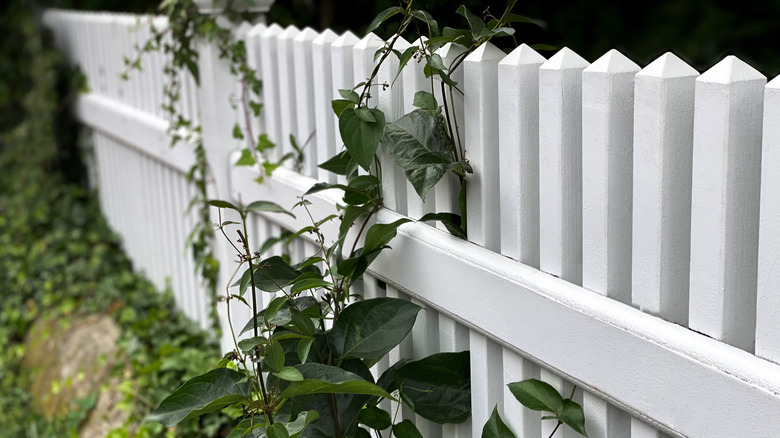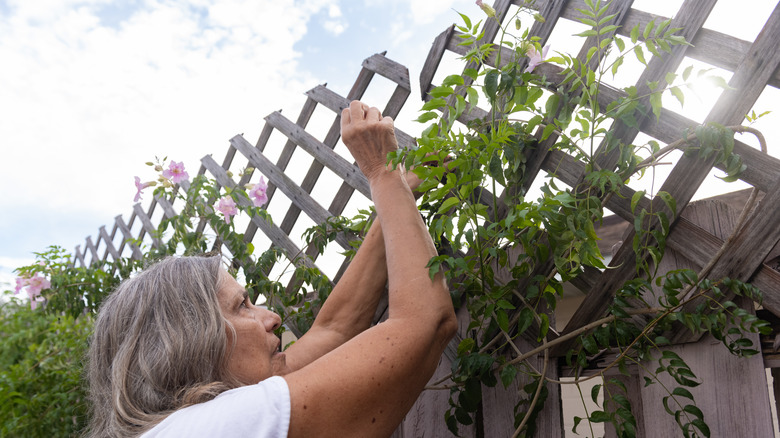Disadvantages To Consider Before Growing Vines Along Fences
Vines bring tons of perks: They act as natural and simple privacy screens, reduce noise from the outside world, and even help keep your outdoor area cooler in the summer. Sounds perfect, right? But before you run out and pick up your favorite climbers, there are some downsides that are worth keeping in mind. What looks like a carefree, romantic garden setup can come with some serious maintenance challenges, including increased trimming and pruning needs, causing rot to wooden fences, and higher pest and health risks.
First off, vines don't just sit pretty on your fence without a little –- or a lot -– of work. Some varieties grow faster than you'd expect and can get out of hand pretty quickly. It might start with the idea of a charming vine-covered fence, but soon you're knee-deep in an ongoing battle to keep things tidy. Trimming and pruning become a regular part of your outdoor chores. If you skip the maintenance, those vines can grow wild, making it hard to get to your fence for simple things like a paint touch-up or even more critical repairs.
There's also the kind of damage these plants can do, especially to wooden fences. Vines that cling tightly with roots or tendrils can trap moisture against the wood, leading to rot and decay. Sure, the damage doesn't happen overnight, but it sneaks up on you, and before you know it, your beautiful fence could be in shambles. However, when it comes to metal fences, they're generally much safer for vines. Metal is sturdy and resilient enough to withstand the pressure of aggressive vines, and it doesn't trap moisture like wood does, so you won't have to worry about rot or decay.
Increased pest activity and health risks
Another downside you might not think about is the pest factor. Vines make for the perfect hiding spots for bugs and even small animals. Ants, aphids, and spiders are common freeloaders that these plants attract, and ivy can act as a convenient bridge for these pests to make their way into your house. The dense growth can also hide nests, making it hard to deal with infestations before they become a major issue.
The shady, damp environment under all those leaves is a perfect breeding ground for fungi. It's not just bad for your fence or walls, but it could also be a problem for anyone with allergies or respiratory issues. Mold and mildew thrive in these conditions, and the spores they release can make breathing difficult for sensitive people.
So, what's the alternative if you're set on having vines in your yard? Consider a trellis or an arbor positioned near the fence but not directly on it. This way, you get the same aesthetic appeal but with way less risk. Just place the trellis or arbor a few inches away from the fence, and the vines will have room to grow and spread out without attaching directly to the fence material. Not only will you get the lush, green look you're after, but it also keeps things tidy and manageable. The trellis will support the weight of the plants and make it easier to train them, while also preventing any moisture buildup, which can lead to damage over time.

